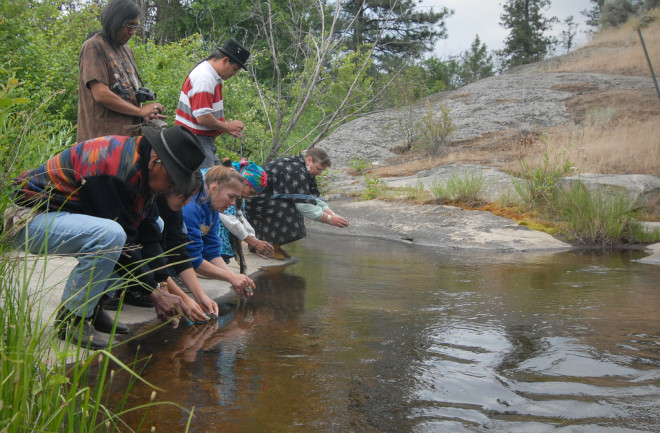Members of the Confederated Colville tribe participate in the First Salmon Ceremony. The Colville were among five tribes who were involved in a lawsuit to obtain Kennewick Man's remains. (Credit: USDA/Flickr) Depending on who you talk to, Kennewick Man is either among the most important archaeological finds in North American history, or the desecrated body of a distant forebear known as “The Ancient One.” Kennewick Man’s remains have fueled a nearly two-decade-long showdown between science and cultural rights, and now those tensions are at the forefront once again. On Thursday, archaeologists who sequenced Kennewick Man’s genome announced that he is more closely related to modern Native Americans than any other population on the planet. The finding, scientifically speaking, appears to settle a fierce, decades-old debate among researchers regarding the man’s lineage. But for the Pacific Northwest tribes demanding a proper burial for Kennewick Man, the results corroborate what they already knew from their oral traditions, and may renew their call for repatriation.
Kennewick Man's Genome Reignites Decades-Old Cultural Dispute

Newsletter
Sign up for our email newsletter for the latest science news
0 free articles left
Want More? Get unlimited access for as low as $1.99/month
Stay Curious
Sign up for our weekly newsletter and unlock one more article for free.
View our Privacy Policy
Want more?
Keep reading for as low as $1.99!
Already a subscriber?
Find my Subscription
More From Discover
Stay Curious
Subscribe
To The Magazine
Save up to 40% off the cover price when you subscribe to Discover magazine.
Copyright © 2025 LabX Media Group
